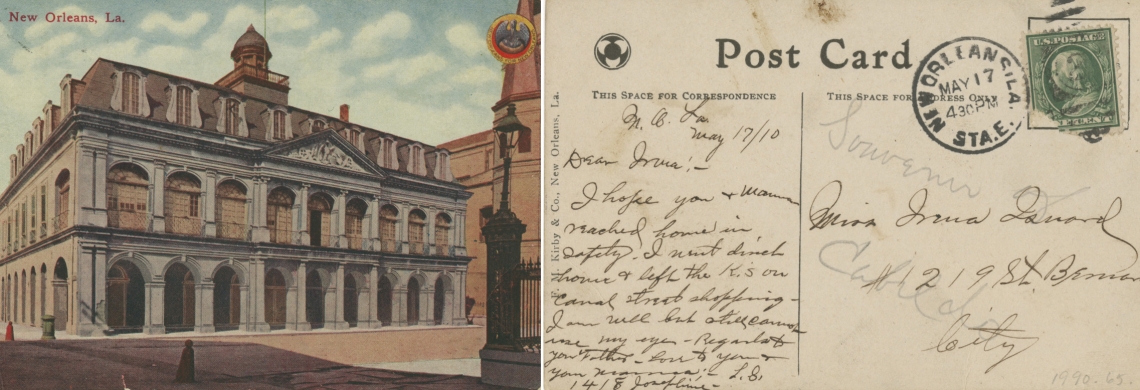“Cellphones have completely changed the way we communicate!” It’s a true enough cliché—who actually calls anyone anymore? If you just have a quick message to deliver, you text. If you want to let a loved one know you’re thinking of them, you text. And if you need to squirm your way out of an awkward situation—you’d better believe, you’d better text.
But even before most households had telephones and cars, people did have a relatively cheap and easy way to keep in touch: the postcard. Then as now, postcards were often sent to friends far away—a “wish you were here” note from a scenic vacation spot. In the early 20th century, though, a postcard was also the simplest way to send the equivalent of a text message to a pal across town.
Not all of the postcards in The Historic New Orleans Collection’s holdings were actually sent through the mail, but many of the ones with handwritten messages on the back were postmarked “New Orleans” and delivered to addresses within Orleans Parish. “City” in the last line meant the card was bound for a New Orleans address.
One example is a card from April 1907 addressed to Octavie Jaubert, who received word that Elodie and Irma were planning to visit her in a few days at the Ursuline Convent.
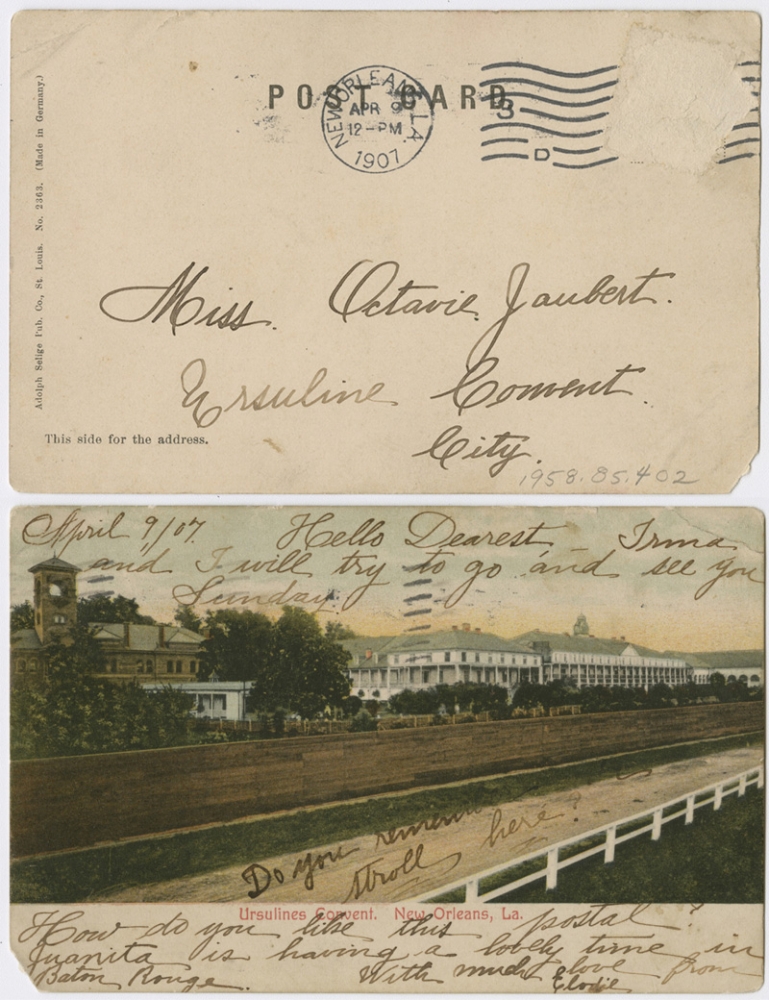
The following is a transcription of the writing on the front and back of the postcard:
[Front]
Hello Dearest, Irma and I will try to go and see you Sunday.
[Written on the walkway outside the convent wall:] Do you remember [illegible] stroll here?
How do you like this postal? Juanita is having a lovely time in Baton Rouge. With much love from Elodie
[Back]
[To:] Miss Octavie Jaubert
Ursuline Convent
City
Scanning through other cards sent and received in New Orleans, it’s striking how similar the messages are to common types of text messages we send every day.
Don’t believe me? Moments after I found this card preserved in a binder in the Williams Research Center—
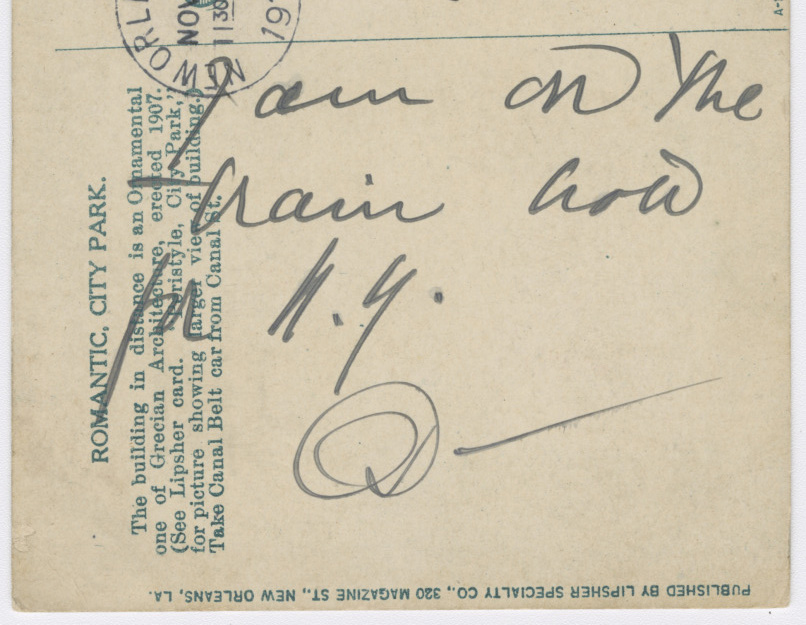
I am on the train now for N.Y.
D—
[To:] James [Gamshell?]
3211 Prytania St.
City
—I received this text message from my sister:
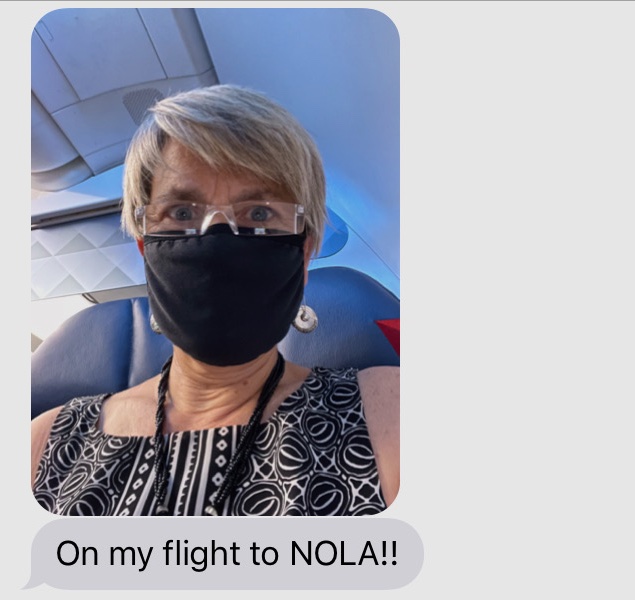
There’s truly nothing new under the sun.
Below, I’ve listed 17 of my favorite cards from THNOC’s holdings, each a glimpse into the everyday lives of people long gone, reviving for a moment a community of people linked together through stamps, cards, and ink.
1. Planning a get-together
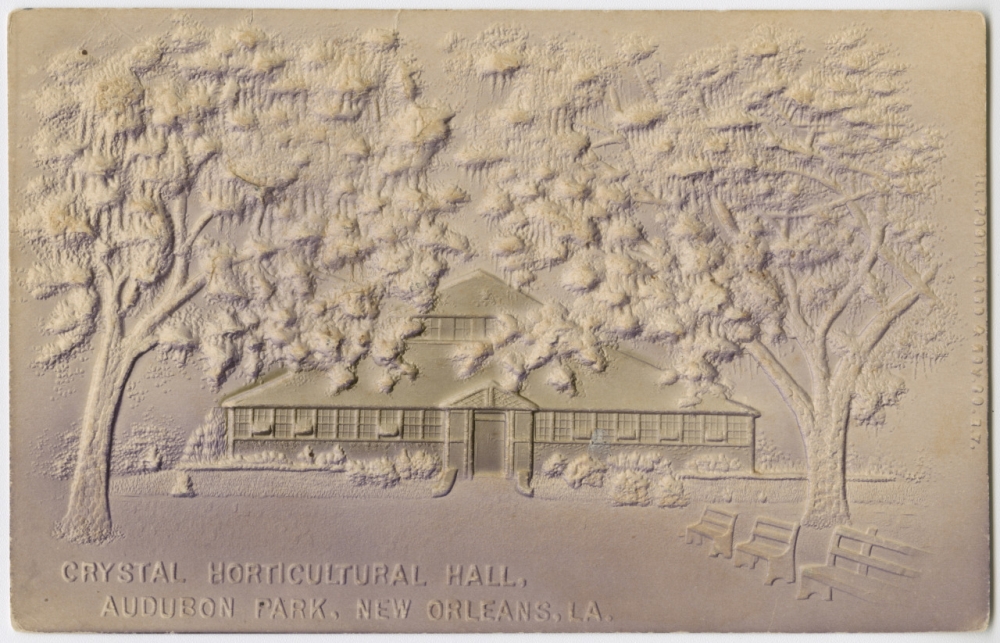
Sometimes we reach out to a close friend for a fun outing . . .
I’ll be down Wednesday afternoon to go shopping. L. B.
[To:] Miss Louise van Manan
815 Delachaise St.
City
2. Hammering out the details
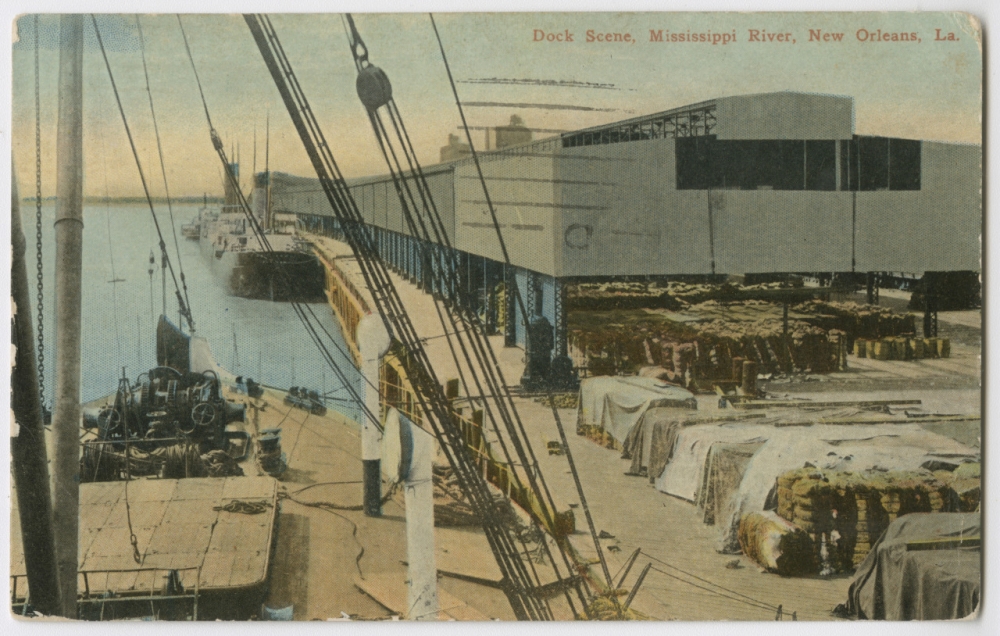
. . . sometimes we just need to take care of business.
Dear Ernestine—
Our class is to meet at 4 P.M. Wed., May 29, to decide what we are to do about the class gift.
(Meet at N.O.N.S.)
Leona Smith
[To:] Miss E. Mouledoux
2529 Annunciation St
New Orleans, La.
3. Checking in after the meetup
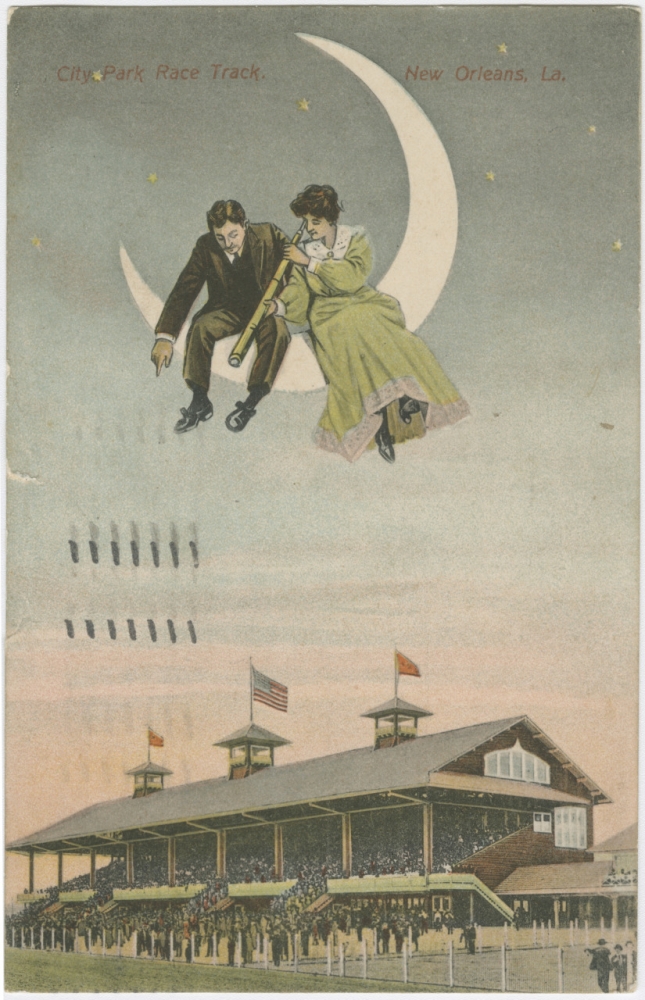
In December 1907 Ed sent greetings 3.5 miles down Prytania Street to Ada and a promise to get together again the next year.
Dear Ada
Have some of the turkey yet? pie is all gone. We’ll [come down?] next year.
Ed
839 State St.
[To:] Mrs. Ada Burkhardt
1429 Prytania St.
City
4. The safety check-in
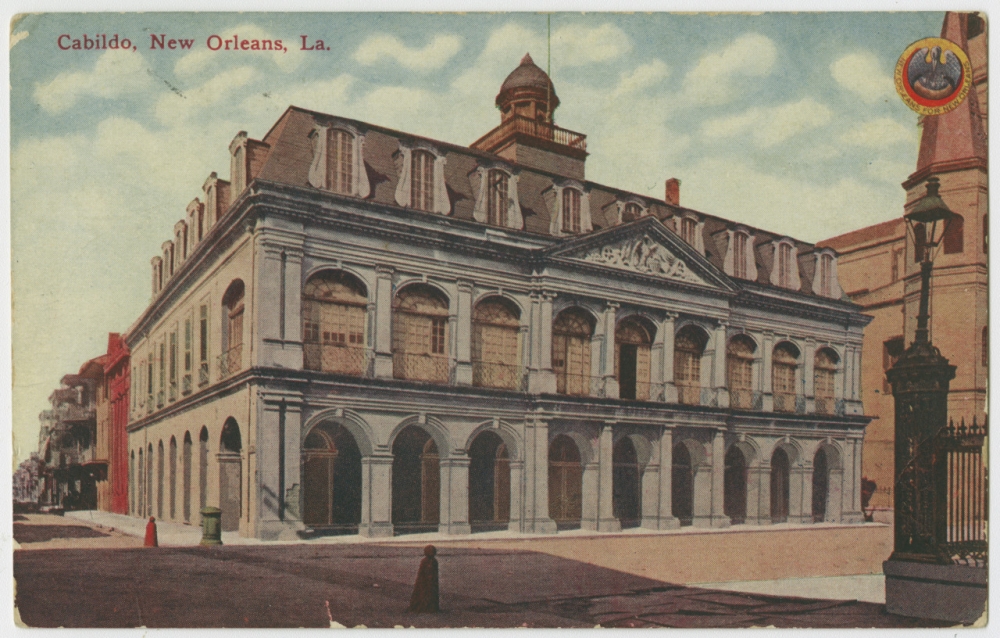
L.S. wanted to make sure Irma and her maman got home all right.
Dear Irma:—
I hope you and [maman?] reached home in safety. I went [direct?] home & left the Ks on Canal Street shopping—I am well but still cannot use my eye—Regards to your father—Love to you & your [maman?]—L.S.
1418 Josephine
[To:] Miss Irma [Isnard?]
#1219 St. Bernard
City
5. Thank-you note
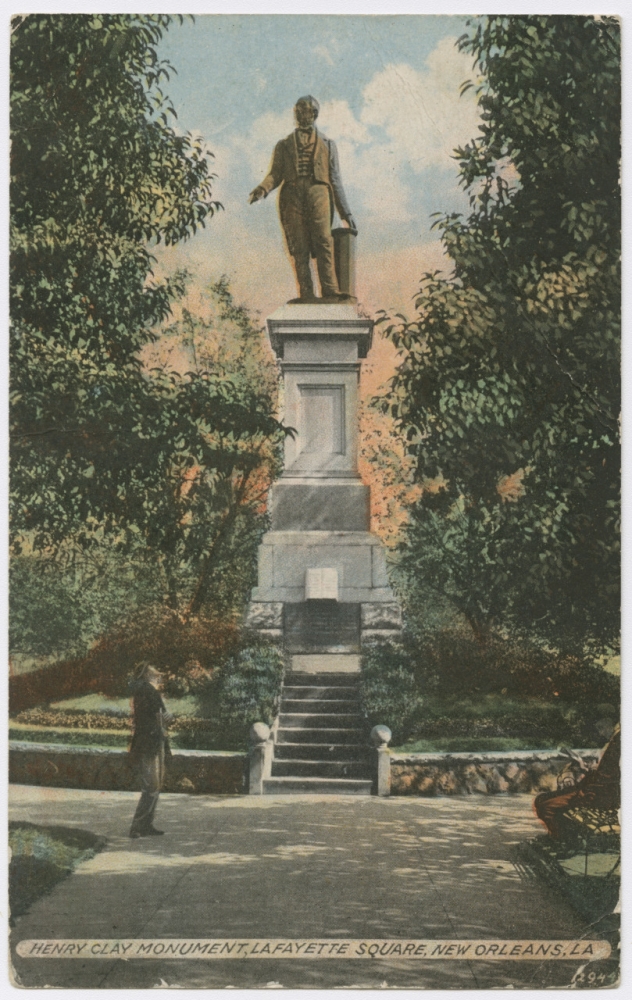
Like a text message, a postcard was a convenient way to quickly acknowledge a small gift.
Dear Friend,
What a treat you did send me—the oranges arrived ok, & are perfectly delicious—Did your place produce them? Hope you are well & enjoying the pleasant change in the weather. Love, FMH
[To:] Miss Ida Leony
Venice La
6. Sending a photo with the text
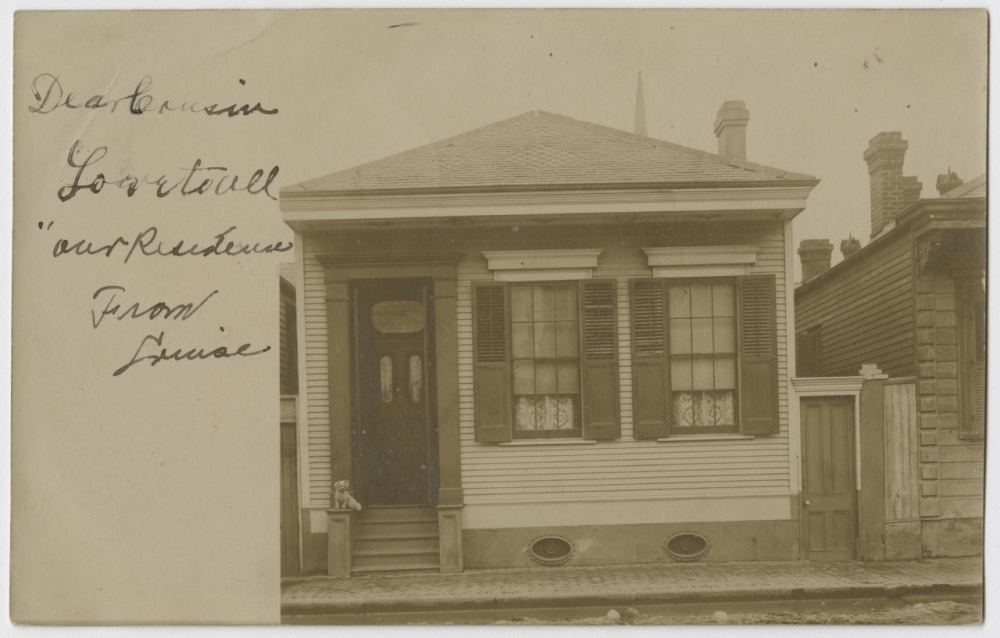
It’s a snap now, but in 1907 you had to find someone with a camera, wait for the film to be developed, and get the photo printed on special postcard paper stock. But if you wanted to show off your new house, it was worth the effort.
[Front]
Dear Cousin
Love to all
our Residence
From
Louise
[Back]
[To:] Miss Louise Sabanaw
#430 Bermuda St
Algiers
7. Apology for not replying promptly
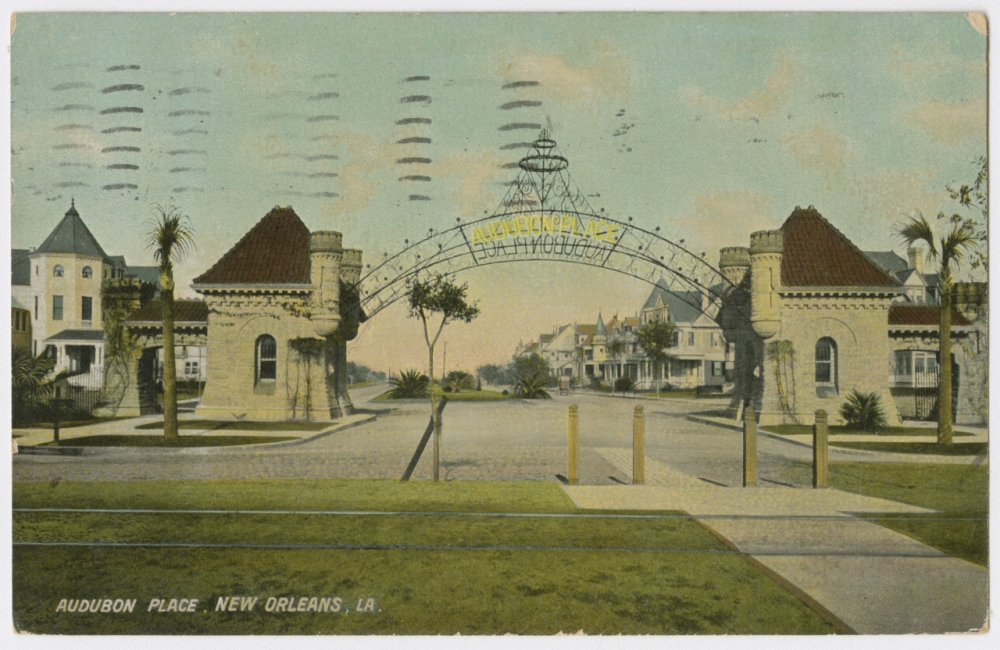
You might suspect that Camille was making excuses:
Dear Viola
Postal Rec’d and appreciated it very much. Would have answered sooner but really dear I had forgotten your address and only found it out just now. Hoping to hear from you and soon. I remain
Camille M.
(Excuse writing)
[To:] Miss Viola Walker
#608 Hagan Ave.
New Orleans La
[At top edge, written in pencil:] if not delivered in 3 days return to 1027 Royal
Note: Other cards addressed to Miss Viola show that she lived at 708 Hagan Avenue, not 608, so it’s possible Camille really did forget her address—or she was a skillful liar!
8. Guilt trip for ghosting (really, Viola?)
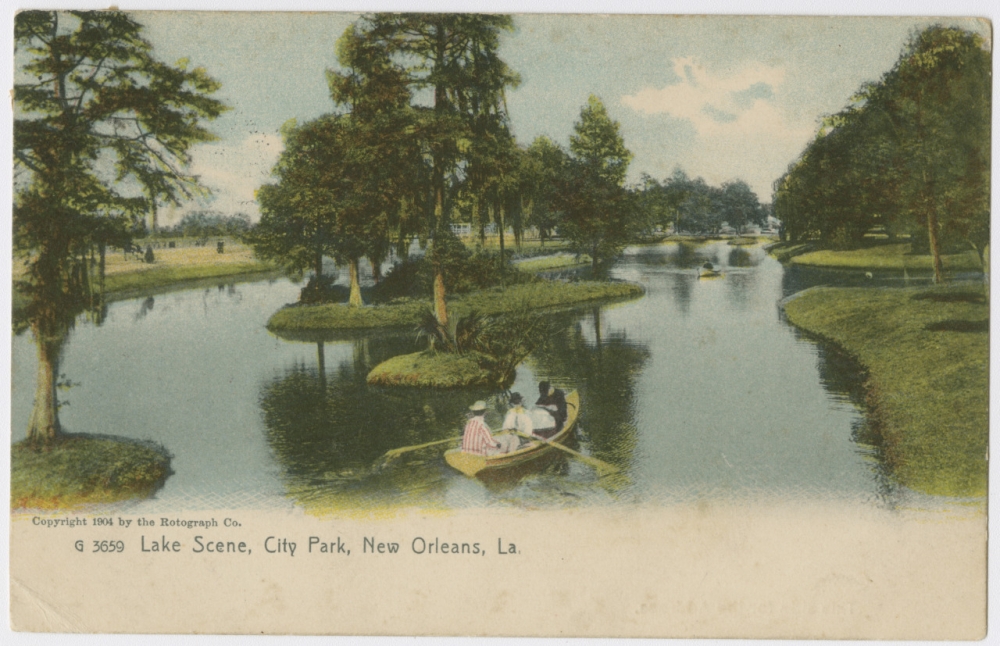
Don’t feel too bad for Viola, though. She didn’t always respond when others reached out.
Say kid don’t forget to answer.
[To:] Miss V. Walker
708 Hagan Ave.
City
The note is unsigned, but City Park scenes seem to be a favorite choice for amorous writers. (Yes, we’ll get to them soon!) This card, in its brevity, invites the modern reader’s imagination to run wild.
9. A hidden message
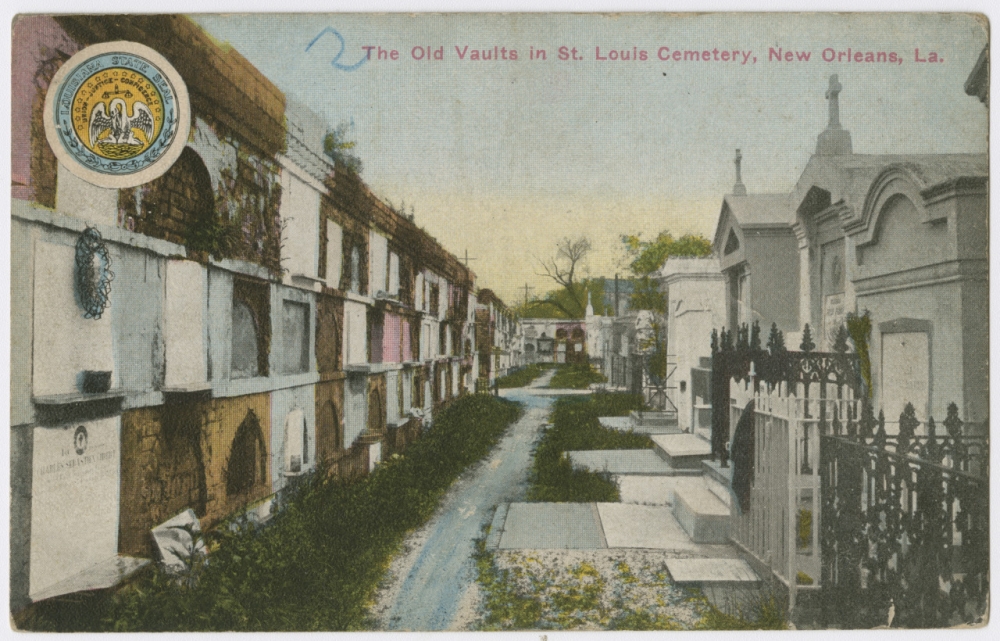
A view of cemetery vaults sets a chillier mood:
Dear Friend
I have been to see you several times, and could never find you home, why don’t you come to see me.
Yours Sincerely,
Mrs. F. N. Longtire
[To:] Mrs. L[?]
1920 Tulane Ave.
City
A hint that the relationship will be dead if Mrs. Longtire’s “friend” doesn’t return the visit soon, perhaps?
More on this card.
10. Before there was Venmo . . .
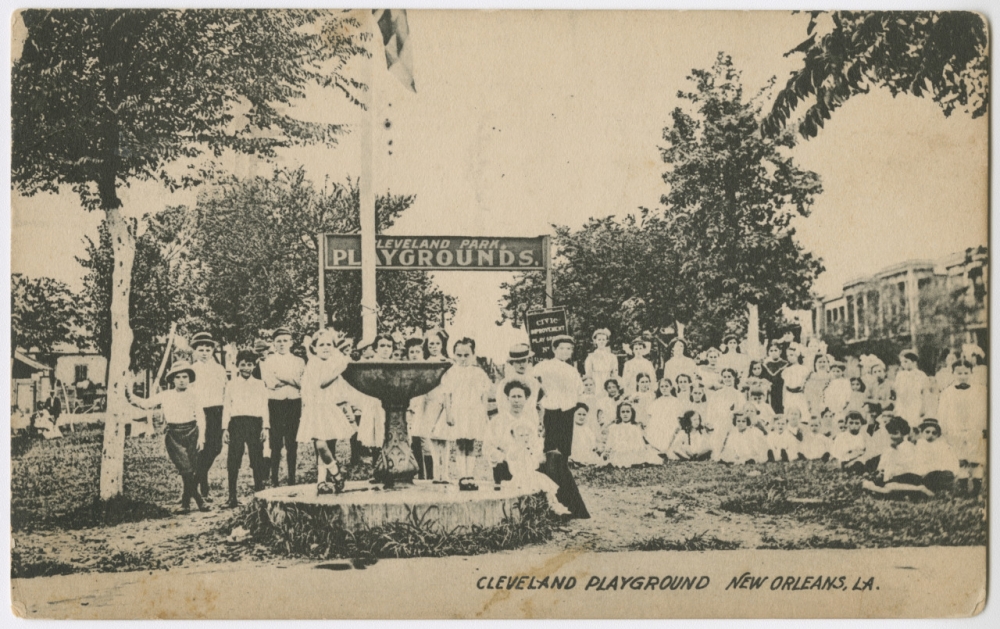
This cheery assembly of kids was perhaps supposed to take the edge off the message on the other side:
Please make returns for basketball tickets
[Lu? Ldi?] Benedetto
[To:] Miss Ca[?] Dodge
4015 Daneel St.
City
In other words, pay up already.
11. Health crisis
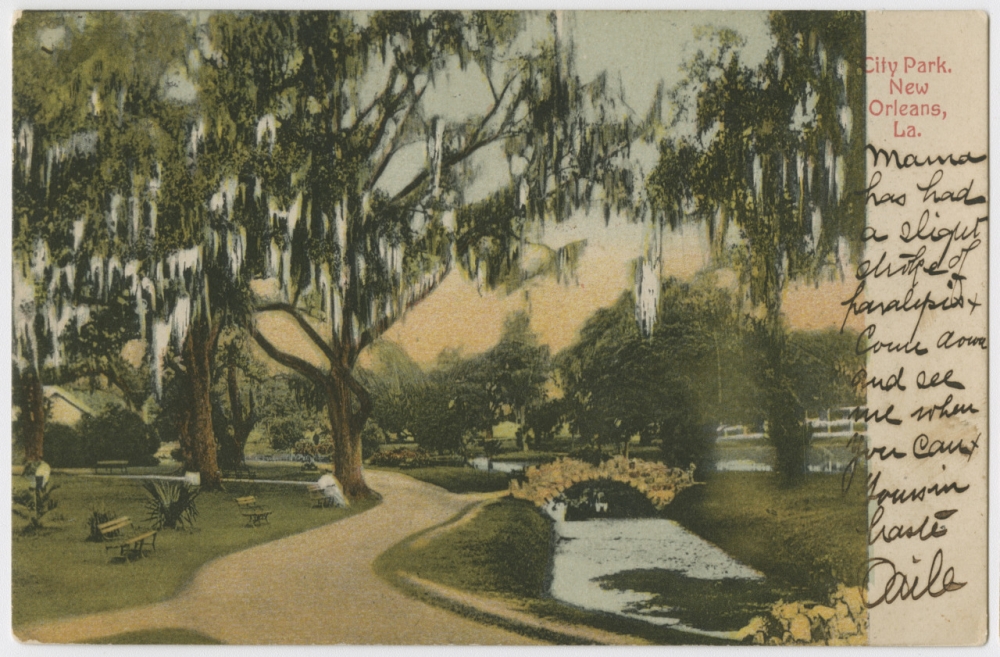
We sometimes have to impart urgent, unpleasant news.
[Front]
Mama has had a slight stroke of paralysis. Come down and see me when you can.
Yours in haste
[name illegible]
[Back]
[To:] Miss Cecile Carriere
1619 So. Rampart St.
City
The writer’s rush left us with an illegible signature, unfortunately.
12. Lovers—or would-be lovers?
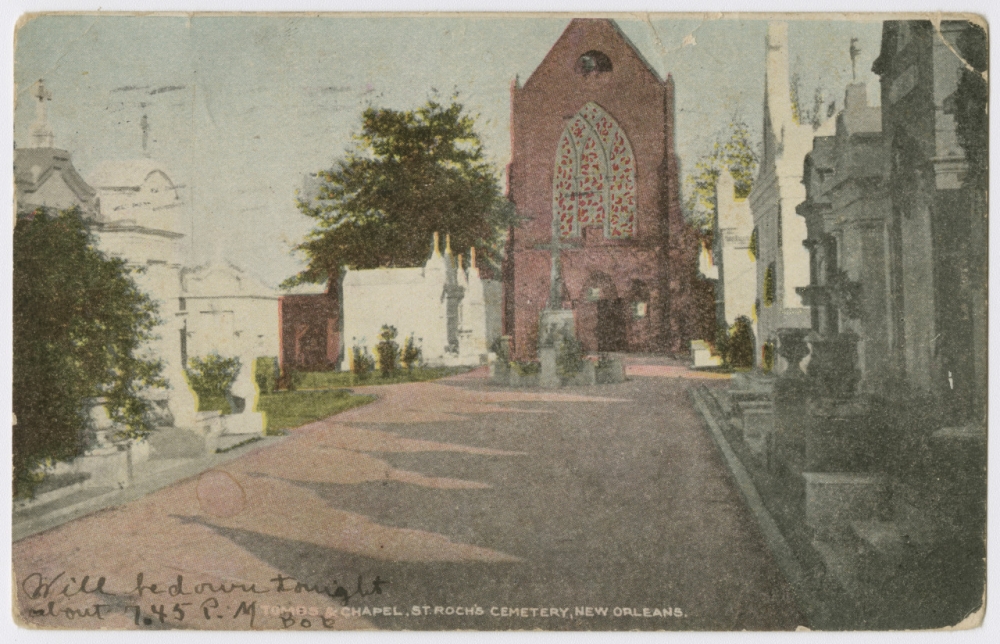
Tiny writing on the front, no other message on the back—just the recipient’s address. A 1907 booty call?
[Front, lower left, very small writing]
Will be down tonight about 7.45 P.M Bob
[To:] Miss Bertha Charpio
#1542 Painters St.
City
What do you suppose Bob and Bertha got up to after 7:45 that evening?
13. A romantic rivalry
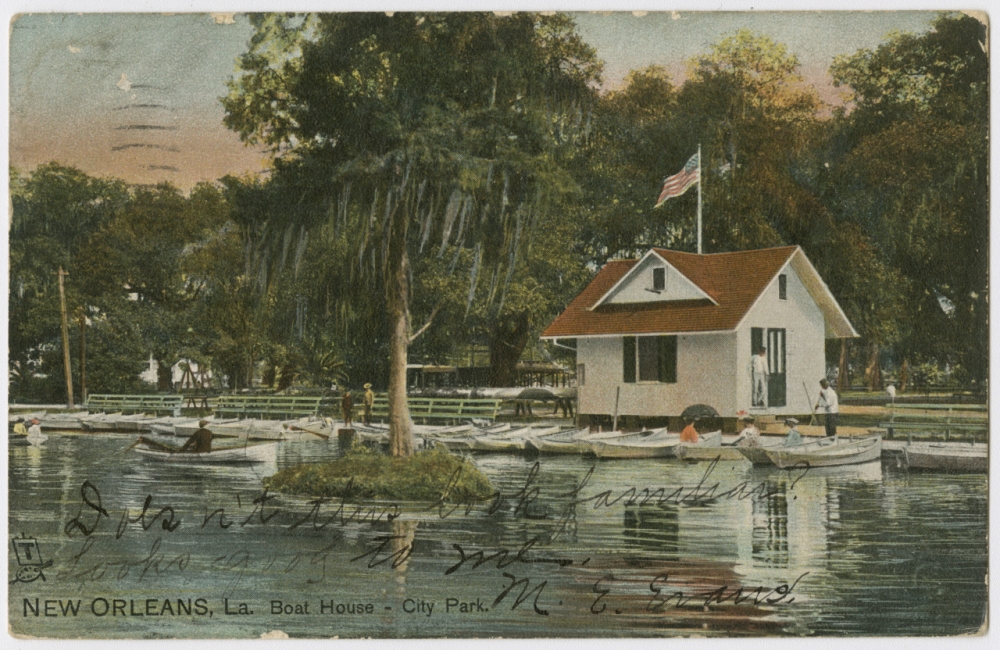
Another watery City Park view, another would-be Romeo. The unlucky Mr. Evans seems to have a rival when it comes to Alice’s heart.
[Front]
Doesn’t this look familiar? Looks good to me. M. E. Evans
[Back]
Looks like you would write a fellow once in a while. I don’t know when the picnic will be, but I will let you know, so you can come and stay with me while you are here. Say[,] he went home yesterday. Don’t cry too much over it, he’ll come back someday. M. E.
[To:] Miss Alice Crisler
Abita Springs, La.
14. Alice’s other suitor
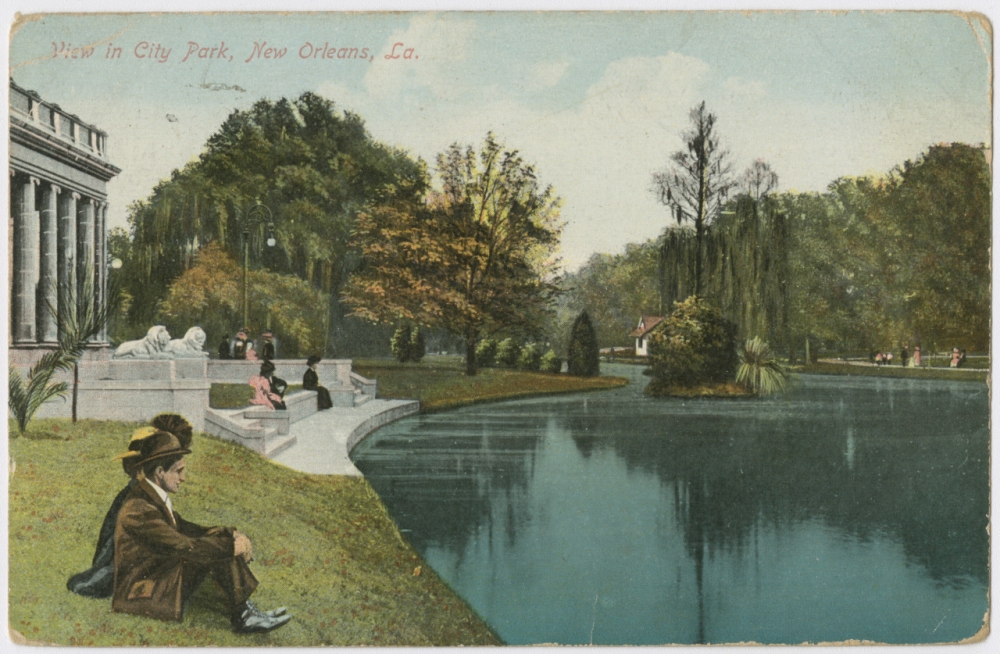
Ah, City Park once more. Well, whaddaya know? A note from the competition.
Dear Alice:—Hope to see you up to the house one of these days I guess you will have to count blots as kisses
Ans. soon.
Regards to all,
I remain
as ever
Jesse
[To:] Miss Alice Crisler
5330 Dauphine
Local
15. The could-you-set-us-up request
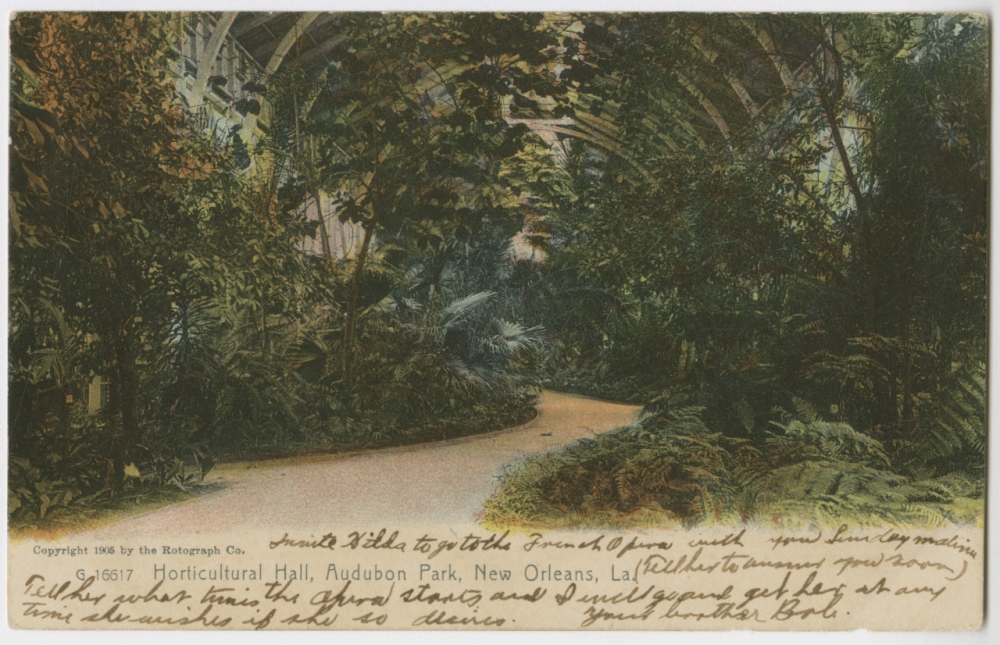
Breathless Bob entreats his sister for help courting Hilda:
[Front]
Invite Hilda to go to the French Opera with you Sunday matinee (Tell her to answer soon) Tell her what times the opera starts and I will go and get her at any time she wishes if she so desires. Your brother Bob.
[Back]
[To:] Miss Marcelle Landry
1137 N. Broad
New Orleans, Louisiana
16. Passing the buck(s)
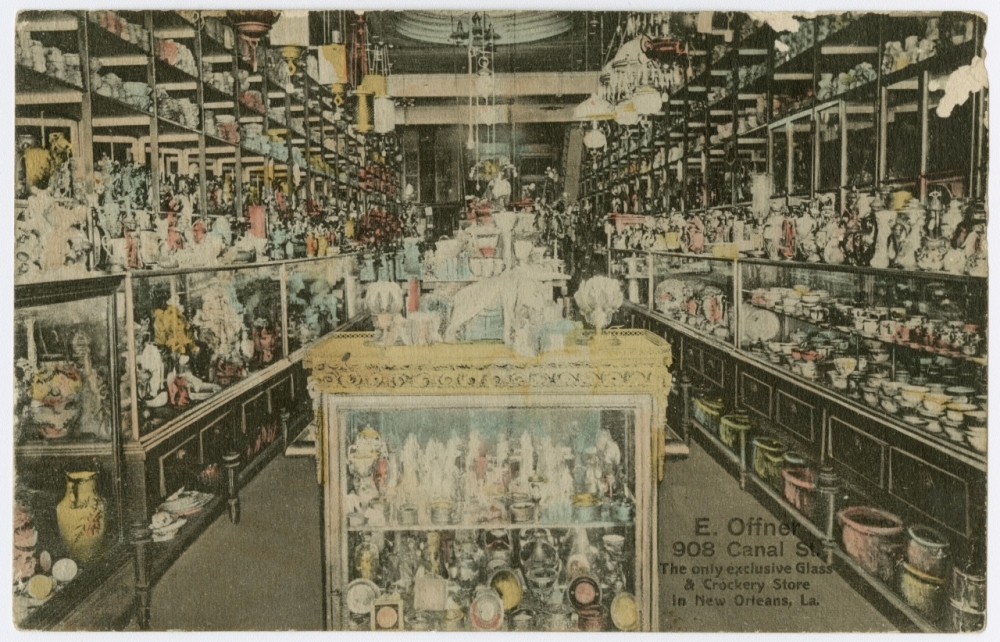
E. H., apparently short on cash, wisely decides to allow her more knowledgeable mother to buy shoes for her.
My dear mama, I received your letter and last night and were [we’re?] very glad to receive the [money?] sorry to know you were so worried. I will wait until you send me some shoes because you know more about strong shoes than me.
You must not worry so much because you will make yourself sick.
Come to see us just as soon as you can. Love and kisses to you and Brother.
E. H.
[To:] Mrs. C. E. Hartz
153 S. Rampart St.
New Orleans, La.
17. The “novel”
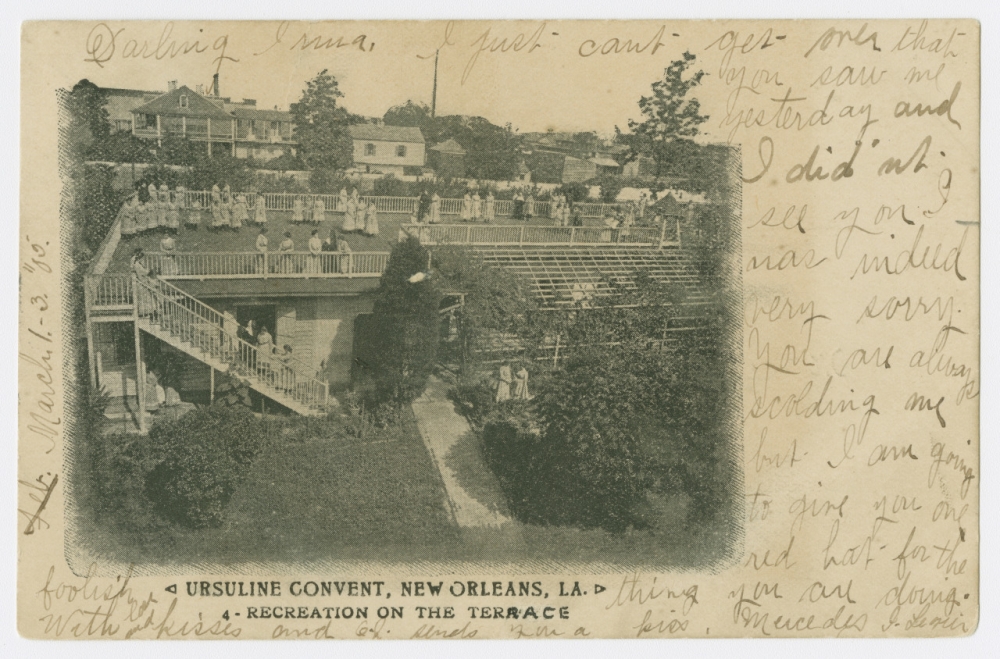
Then there’s the writer who professes surprise or ignorance in response to someone else’s message, chucks in a red herring (or hat) to throw the recipient off the trail, and goes on at greater length than necessary. Mm-hmm . . . a likely story.
Darling Irma, I just can’t get over that you saw me yesterday and I didn’t see you. I was indeed very sorry. You are always scolding me but I am going to give you one red hat for the foolish thing you are doing. With love and kisses and [G. I.?] sends you a kiss. Mercedes I. Leguin
[To:] Miss Irma Jaubert
#543 St. Ann St.
City
If you like reading other people’s mail, thousands more postcards await in THNOC’s Williams Research Center. The Reading Room is open by appointment, and our reference staff will be happy to help you find the materials that interest you.

